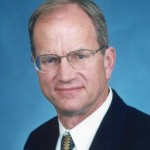Move to End Naming of Highways By Lawmakers Faces April 9 Hearing
A state lawmaker is trying to strip the Legislature of one of its perks — naming streets, bridges and highways in honor of persons, often their former colleagues.
Assemblyman Chris Norby, a Fullerton Republican, proposes to transfer authority for naming streets and highway to the California Transportation Commission.
His measure, AB 1645, is scheduled for a Monday April 9 hearing before the Assembly Transportation Committee.
This is Norby’s second attempt to put a halt to the practice, which he claims has “gone crazy.”
A previous measure by Norby, AB 595, would have imposed a two-year moratorium on lawmakers naming additional parts of California’s transportation network.
“The state is facing tremendous deficits, services are being cut, and our state Legislature is spending valuable time, staff resources and taxpayer money memorializing state highways, instead of working on more important issues, such as the state budget deficit,” Norby wrote in encouraging an “aye” vote for the legislation.
When it appeared the bill didn’t have enough votes to pass the same committee Norby comes before April 9 he offered to amend the bill to become a one-year moratorium and exempt road sections honoring dead California Highway Patrol officers.
Even so, the bill failed on a 5 to 5 vote in the 14-member committee.
Right now, names can come from the Legislature, the Transportation Commission, cities, counties and common usage.
Both the Senate and Assembly Transportation Committees established policies for legislative naming resolutions.
First, the sign cannot cost the state anything. It expense must be raised from private sources – between $800 to $1,200 per sign, Caltrans estimates.
Norby says to process such a sign request costs $15,000t o $30,000 worth of a Caltrans worker’s time.
Among the other criteria, anyone proposed to be so honored must have “provided extraordinary public service or some exemplary contribution to the public good and have a connection to the community where the highway is located.”
If named for a person, they must be deceased. If named after a lawmaker, they must be out of office.
No segment of highway being named can be more than five miles in length and there can be no community opposition.
If that structure or segment is already named it can’t be renamed unless shown there is no opposition to the change.
Several years ago, Don Doyle, a three-term East Bay Assemblyman from the mid-1950s nearly lost the section of Interstate 680 being his name – a freeway he helped create – when a resolution sought to name the same stretch after retired Sen. Dan Boatwright, a lawmaker of more recent vintage. Doyle objected and prevailed.
In January 2011, Caltrans issued 2010 Named Freeways, Highways, Structures and Other Appurtenances in California, a 236-page report cataloguing some 700 named highways, rest areas, bridges, freeways, tunnels, interchanges and memorial plaques.
The tome reveals that far more parts of the highway system are named after places, persons and things than former lawmakers.
It lists everything from signs directing motorists to San Diego’s Little Italy to the John “Chuck” Erreca Rest Area on Interstate 5 to the Alexander Zuckerman bicycle-pedestrian pathway between Oakland and Yerba Buena Island on the new eastern span of the Bay Bridge.
Erreca was Gov. Pat Brown’s director of public works. More than 1,300 miles of freeway and 1,100 miles of highways were built during his four years on the job.
The report says Zuckerman’s “well-organized and persistent efforts” were “key factors” in including the path on the new deck of the bridge.
Naming isn’t a new issue. In fact, the state’s freeways and highways had names before they had numbers.
Originally, state highways were commonly named after their destination. In Southern California freeways radiated out from the hub of Los Angeles and so took their names from were they were heading: Santa Ana, San Bernardino, Pasadena, Pomona, Santa Monica, Garden Grove, Ventura and San Diego.
Numbers were introduced to simplify signing and reduce motorist confusion.
In 1962, the state Senate called for a study on the naming of parts of the transportation system.
The report led lawmakers the following year to place a moratorium on new namings until more study.
Caltrans was asked to update the report in 1967. It recommended future names embrace geographic and historical features, not be memorials.
Authority for future naming should be placed in the hands of one entity, the revised report said:
The California Transportation Commission then called the Highway Commission.
-30-
Filed under: Legislature/Legislation
- Capitol Cliches (16)
- Conversational Currency (3)
- Great Moments in Capitol History (4)
- News (1,288)
- Budget and Economy (383)
- California History (139)
- Demographics (11)
- Fundraising (74)
- Governor (122)
- Legislature/Legislation (270)
- Politics (173)
- State Agencies (38)
- Opinionation (36)
- Overheard (246)
- Today's Latin Lesson (45)
- Restaurant Raconteur (21)
- Spotlight (110)
- Trip to Tokyo (8)
- Venting (184)
- Warren Buffett (43)
- Welcome (1)
- Words That Aren't Heard in Committee Enough (11)



The segment of SR 180 in Fresno between Route 99 and Chestnut Avenue is named the “Senator Jim Costa Highway”. Named on August 23, 2002.
Comment by Michael Jarvis — 4.08.2012 @ 8:04 am